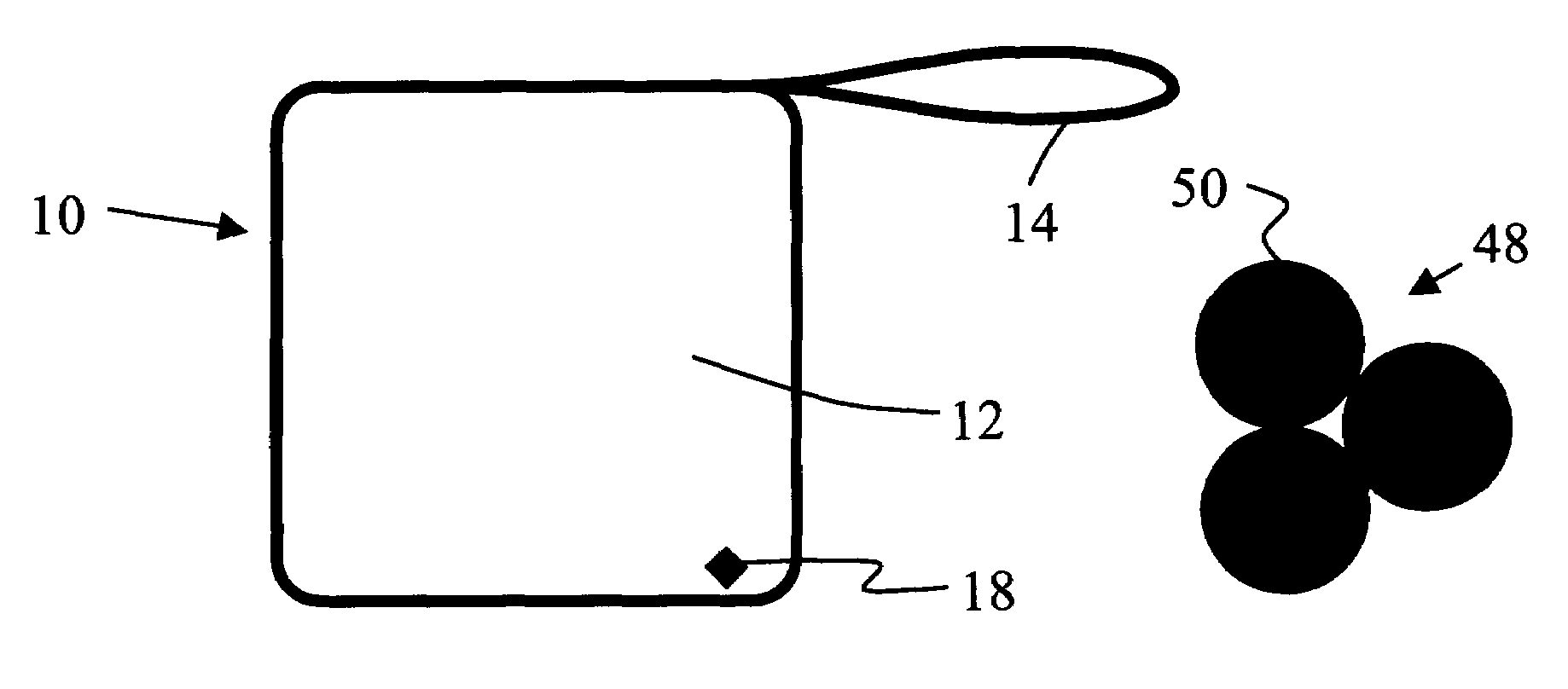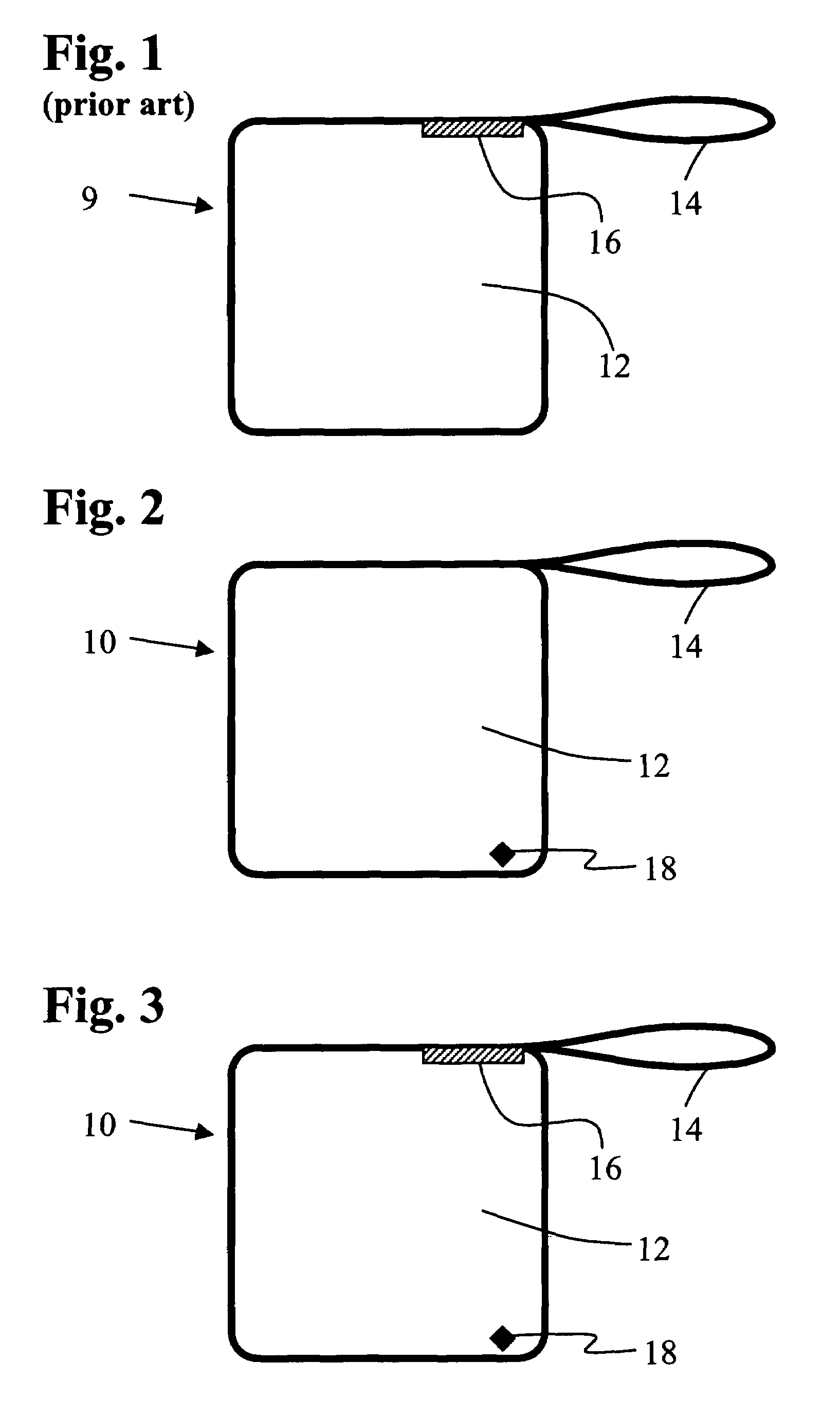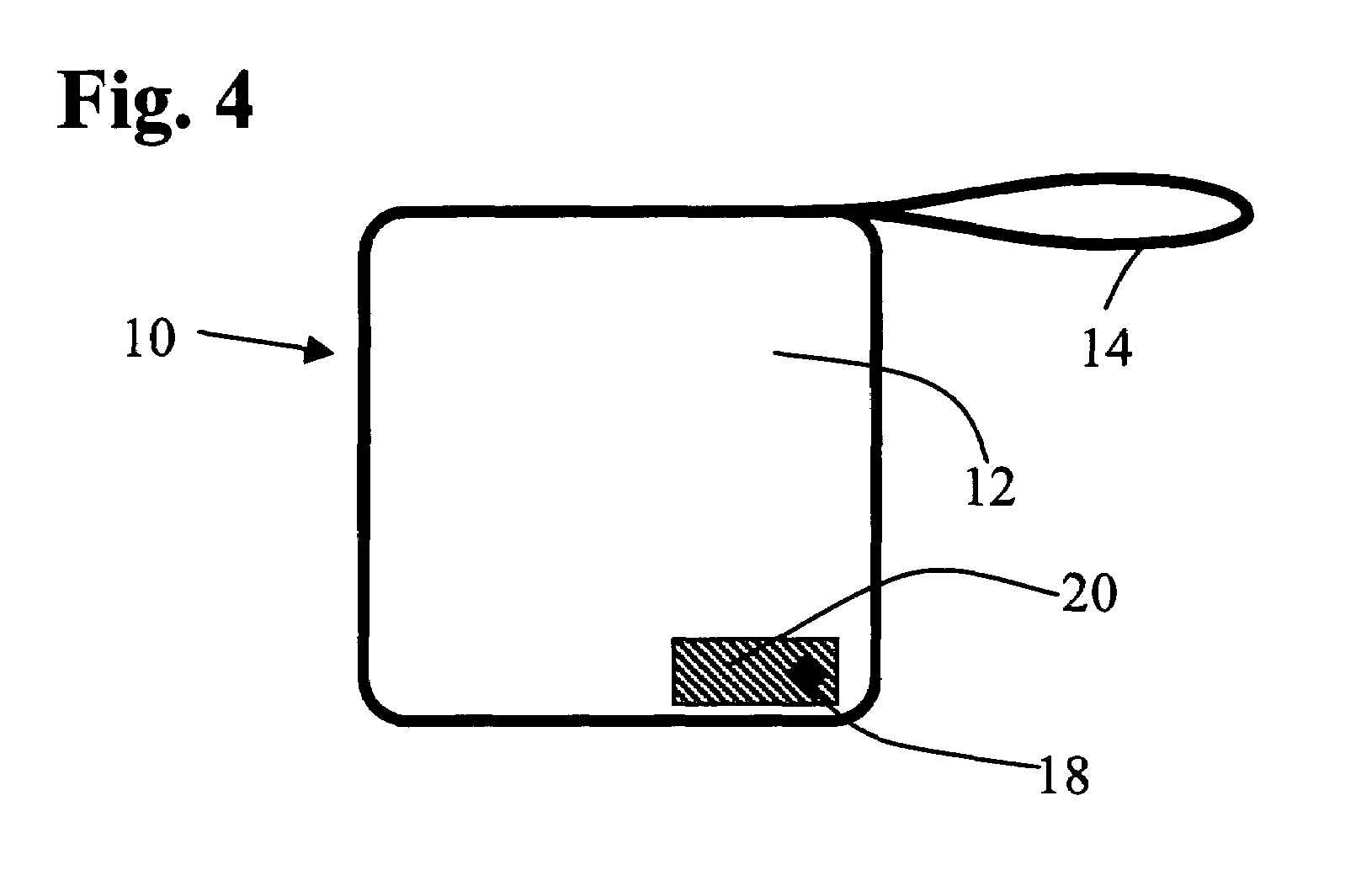Radiopaque marker for a surgical sponge
a radiopaque marker and sponge technology, applied in the field of sponges, can solve the problems of disturbing regularity, pain, infection, death of patients, accidental retention of surgical implements, sponges and the like, etc., and achieve the effects of high radiographic density, high contrast, and easy recognition and differentiation
- Summary
- Abstract
- Description
- Claims
- Application Information
AI Technical Summary
Benefits of technology
Problems solved by technology
Method used
Image
Examples
Embodiment Construction
[0027]The present invention provides a radiopaque marker that is adapted to be attached to a surgical sponge or surgical implement. As a result of the high radiographic density and distinctive shape of the marker, an x-ray image thereof is easily recognized. If a sponge or implement bearing such a marker is inadvertently allowed to remain within the patient after the conclusion of surgery, it may still be detected and localized by a routine postoperative x-ray and subsequently removed to prevent serious medical consequences.
[0028]Referring now to FIG. 1 there is depicted a prior art surgical sponge 9 composed of gauze 12 and having a fabric loop 14 to facilitate identification and location of the sponge. The sponge bears a generally rectangular, sheet-form radiopaque element 16. Each of FIGS. 2-4 depicts an aspect of a surgical sponge 10 of the invention. As depicted, each sponge includes an optional fabric or thread loop 14 to facilitate identification and location of the sponge. S...
PUM
 Login to View More
Login to View More Abstract
Description
Claims
Application Information
 Login to View More
Login to View More - R&D
- Intellectual Property
- Life Sciences
- Materials
- Tech Scout
- Unparalleled Data Quality
- Higher Quality Content
- 60% Fewer Hallucinations
Browse by: Latest US Patents, China's latest patents, Technical Efficacy Thesaurus, Application Domain, Technology Topic, Popular Technical Reports.
© 2025 PatSnap. All rights reserved.Legal|Privacy policy|Modern Slavery Act Transparency Statement|Sitemap|About US| Contact US: help@patsnap.com



